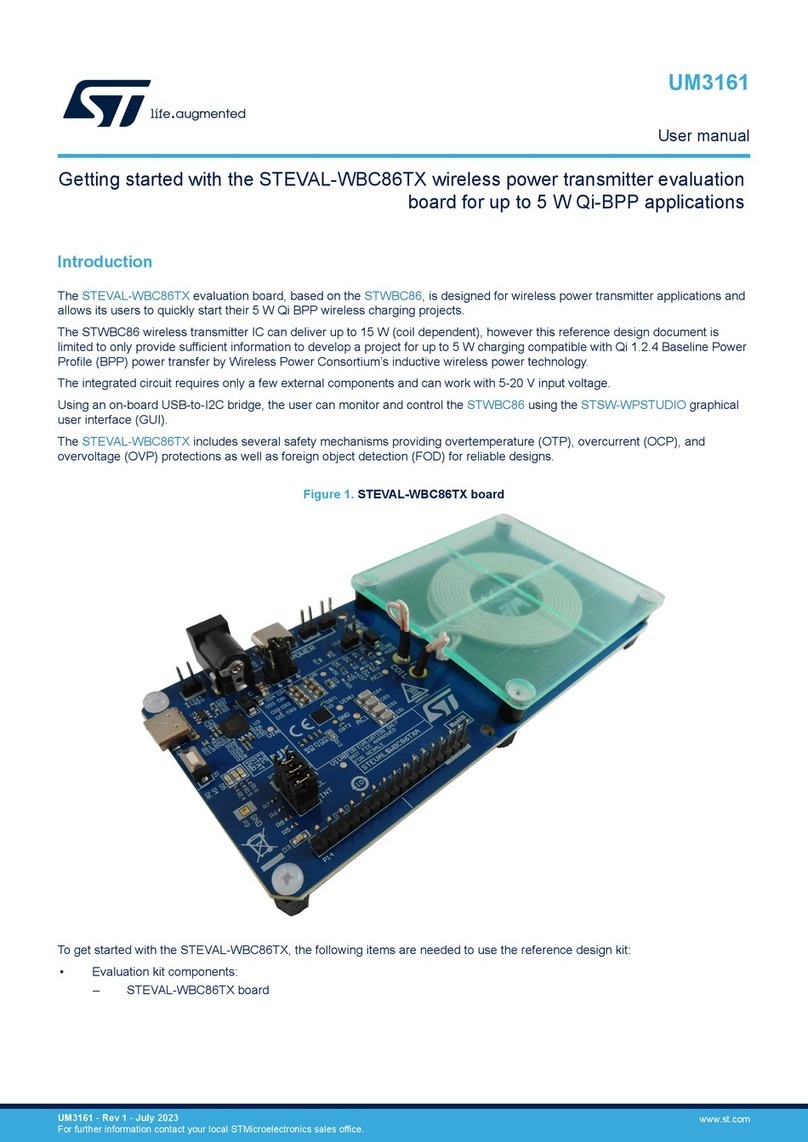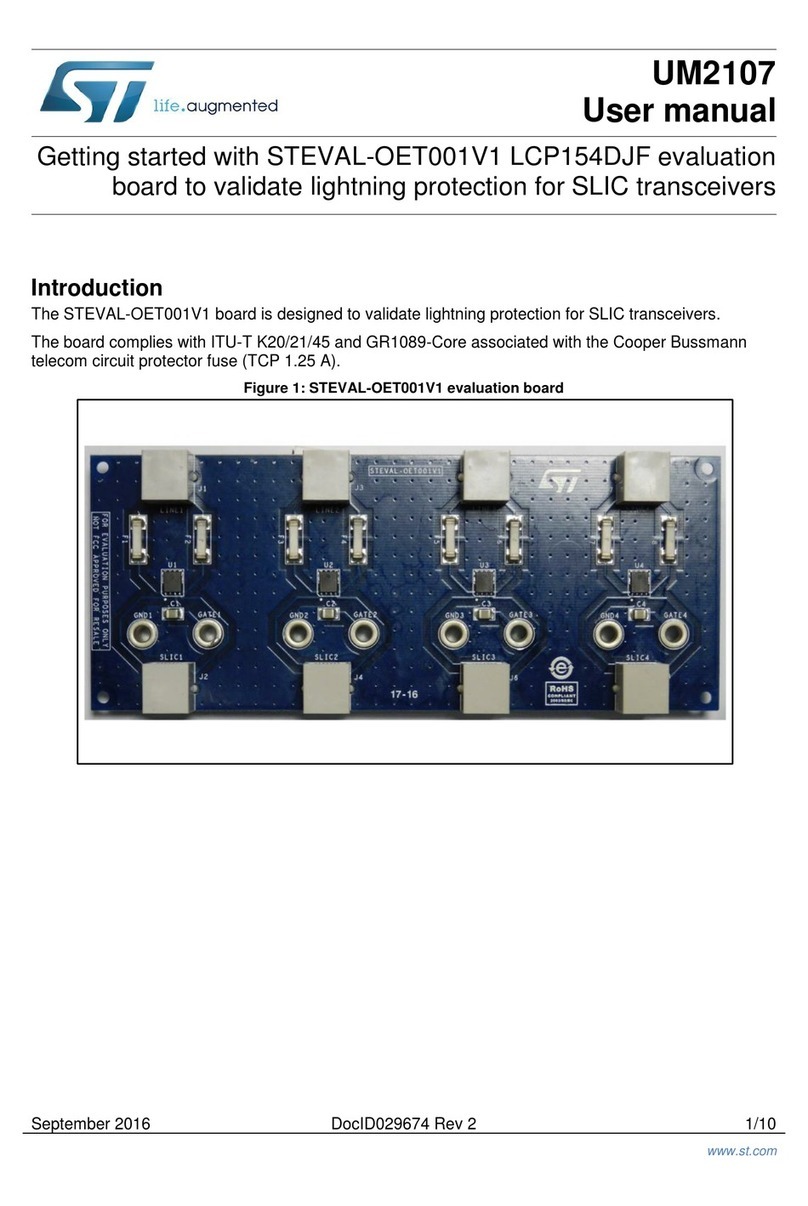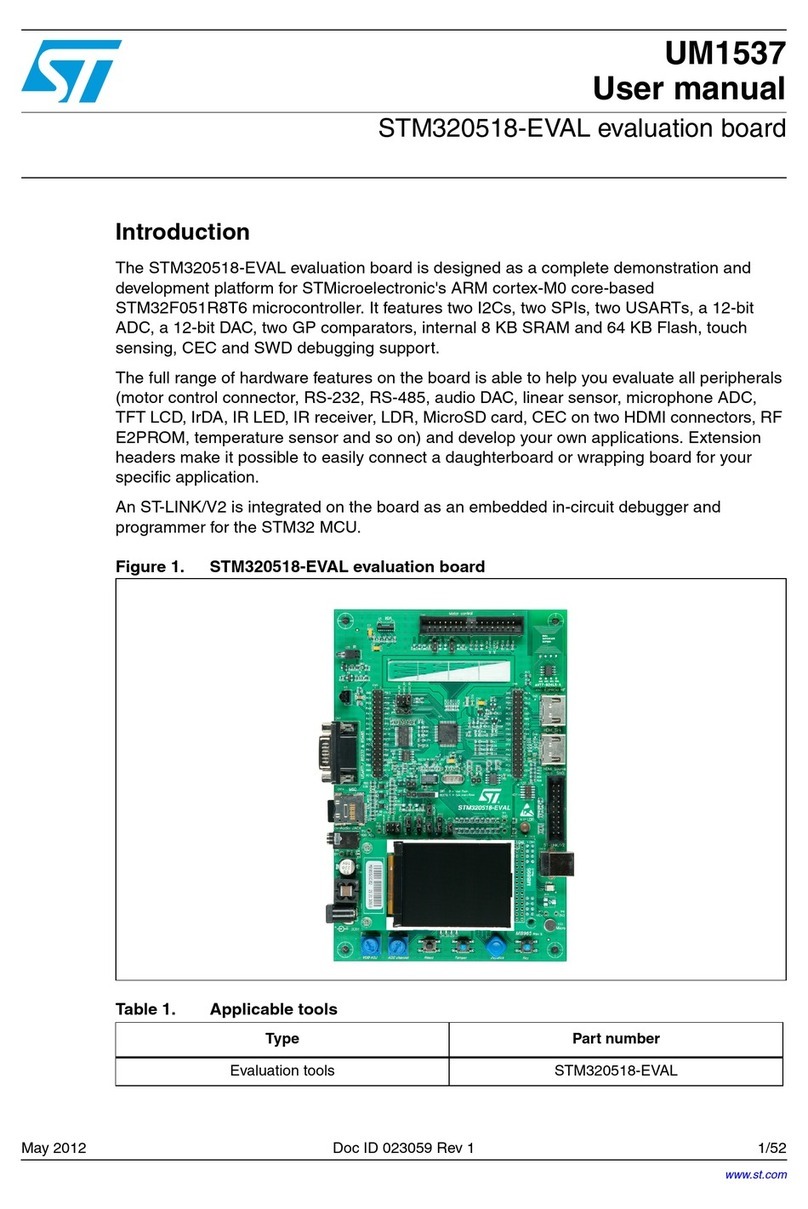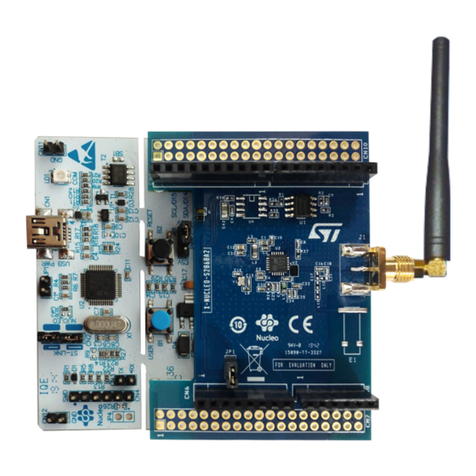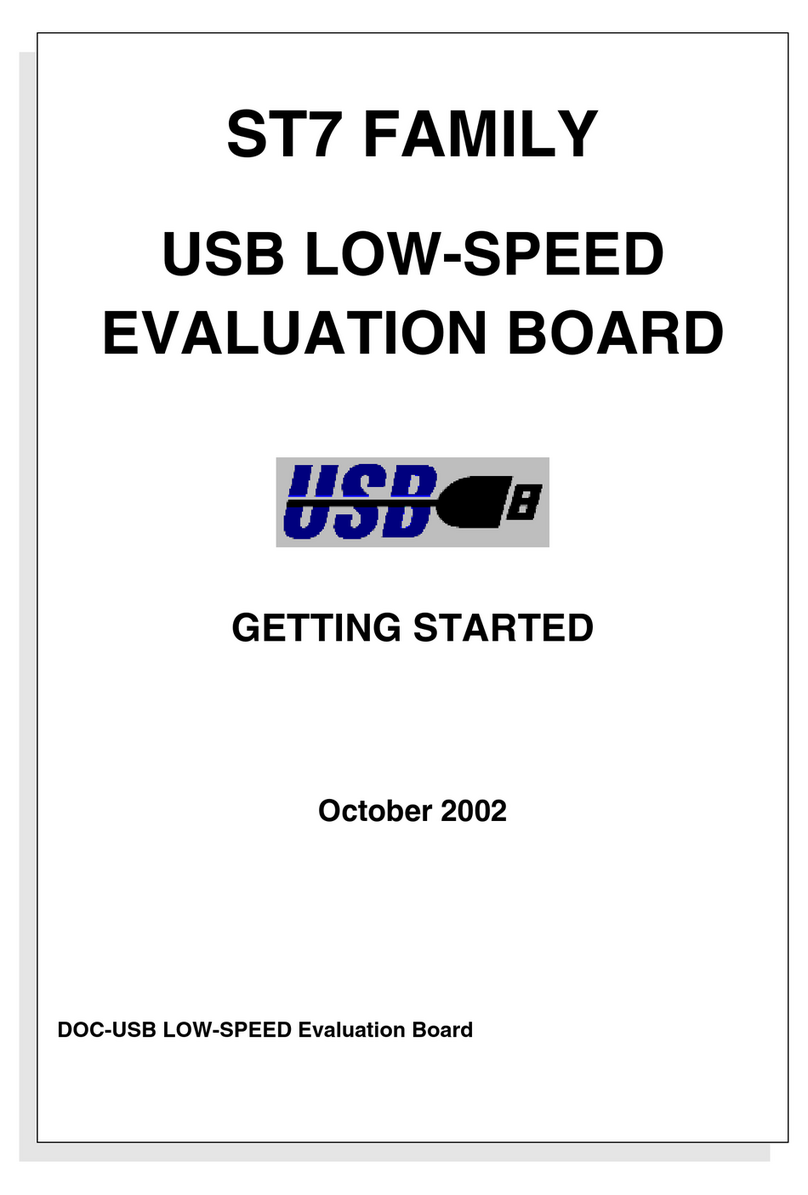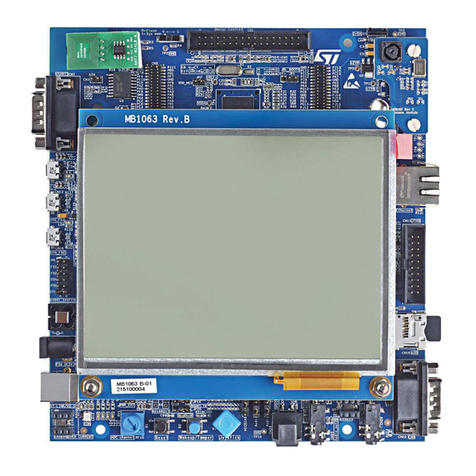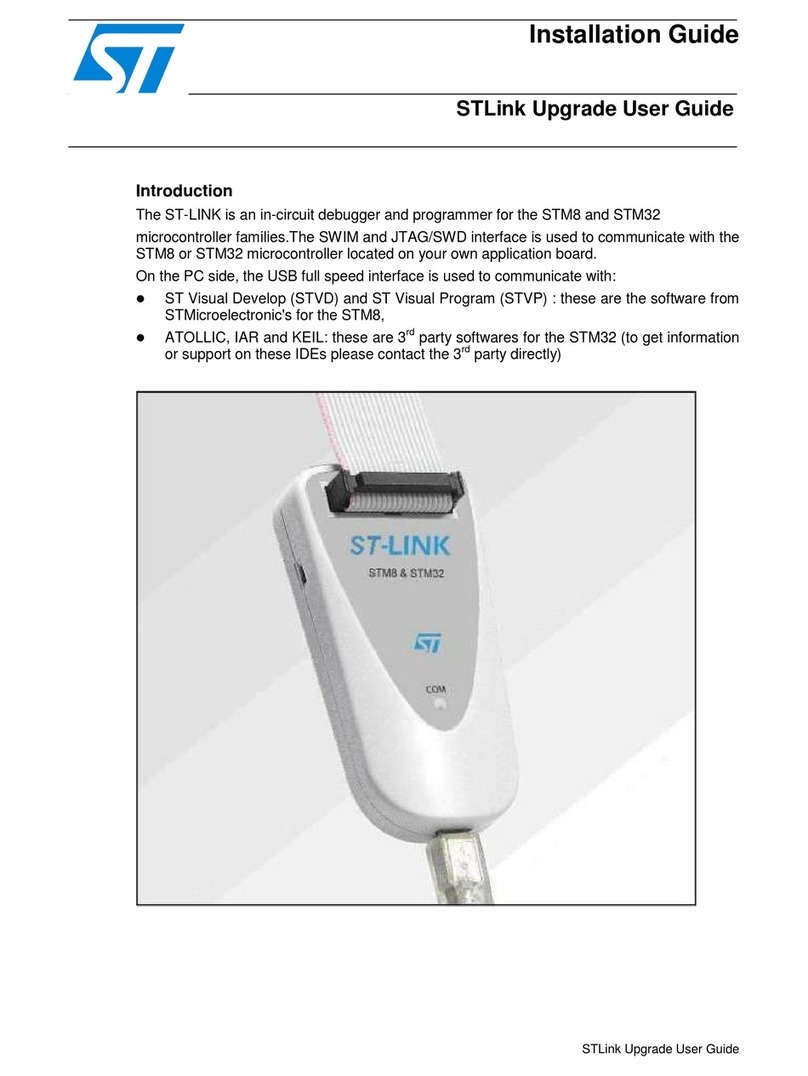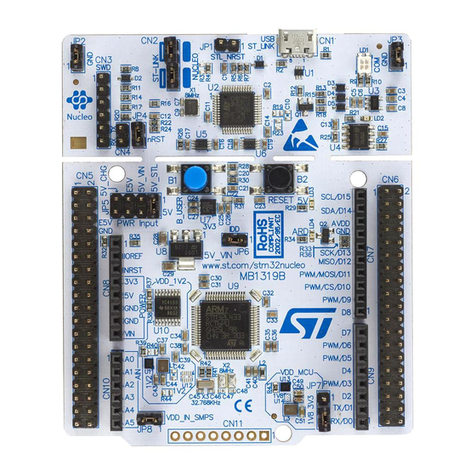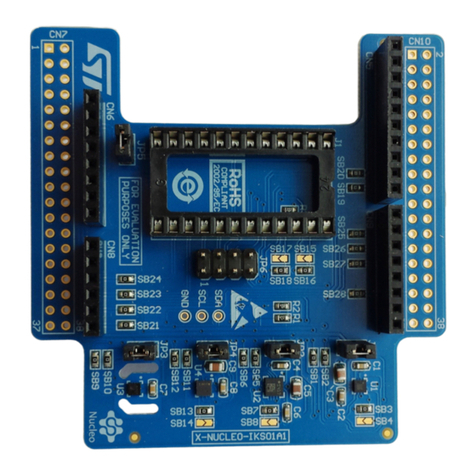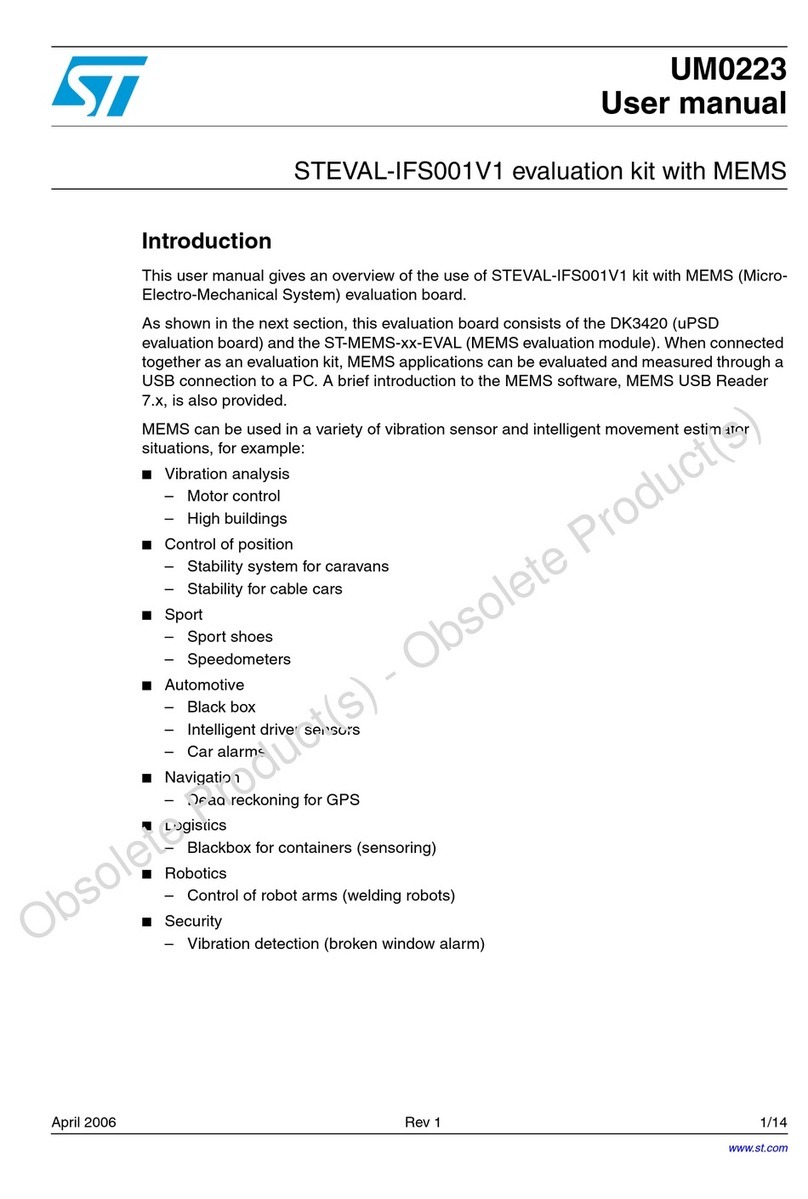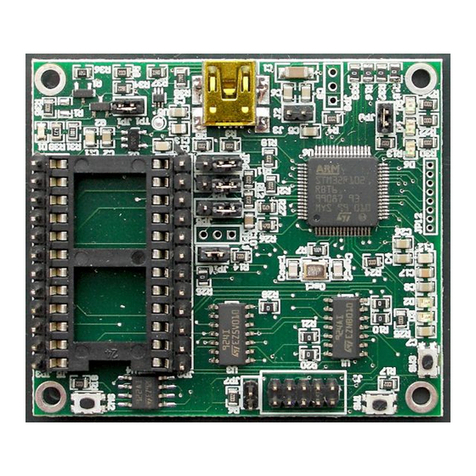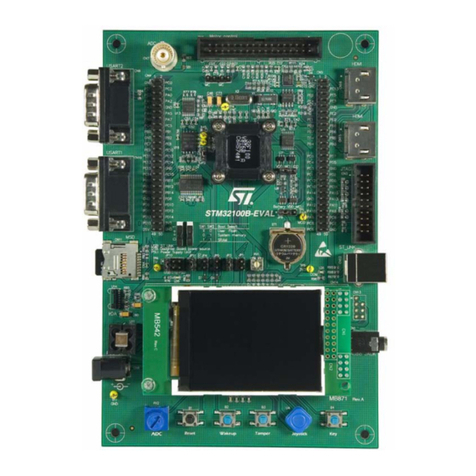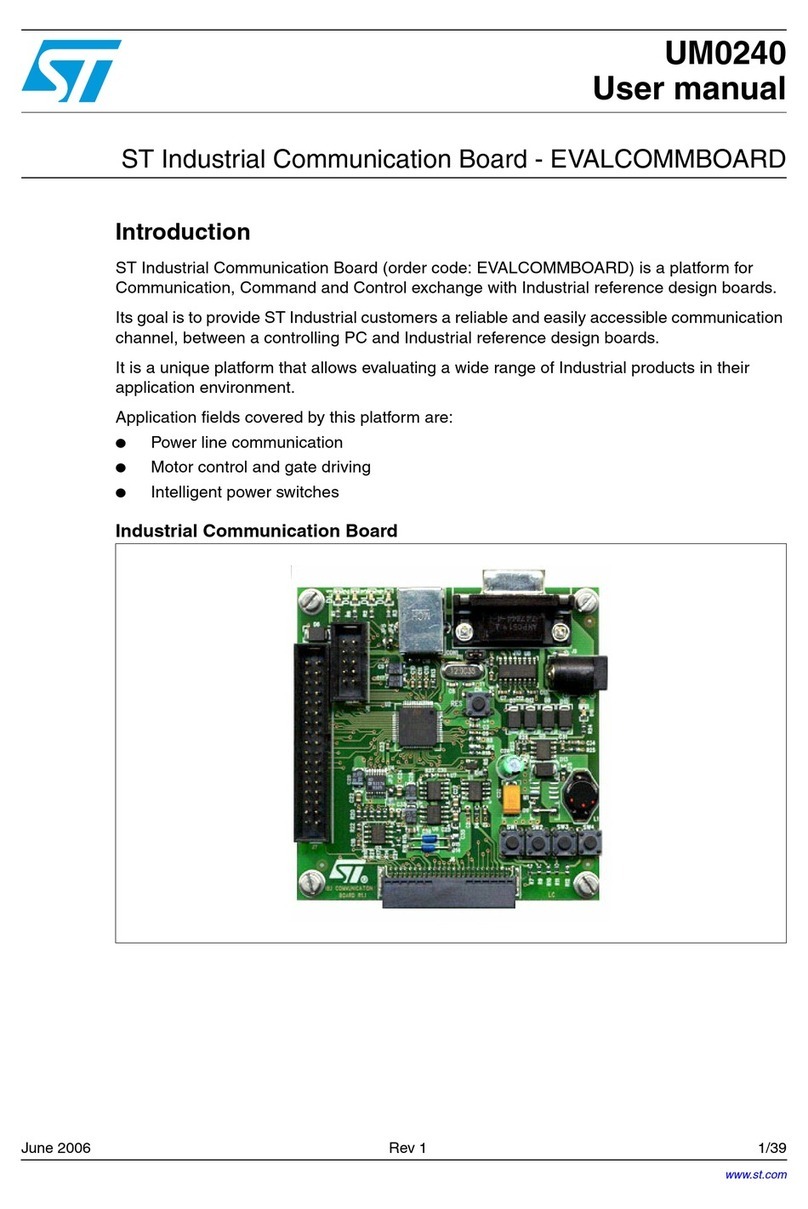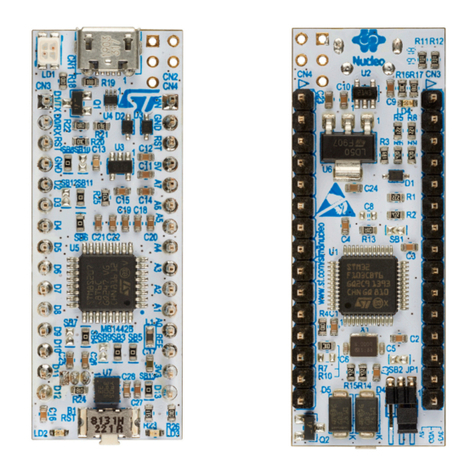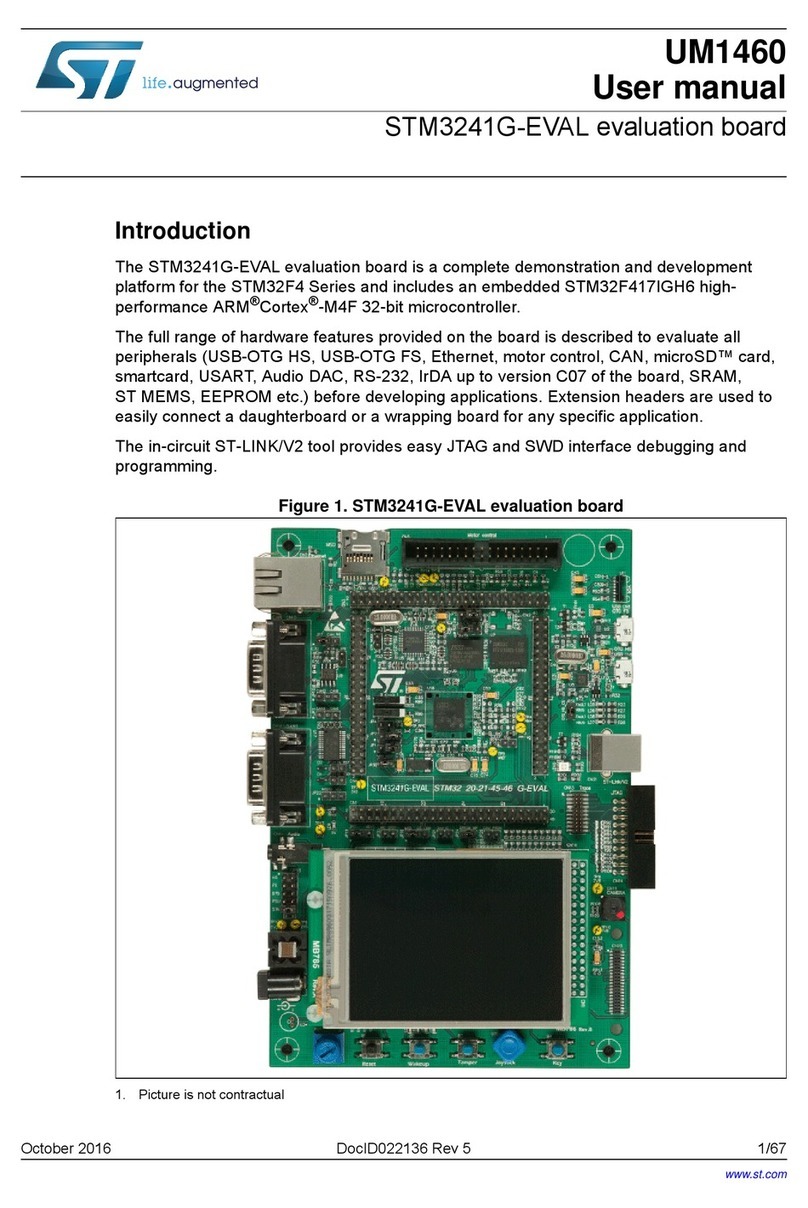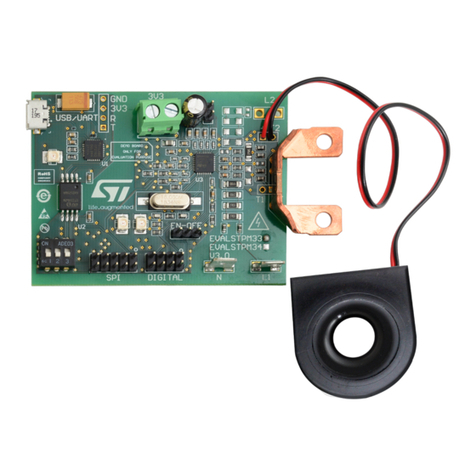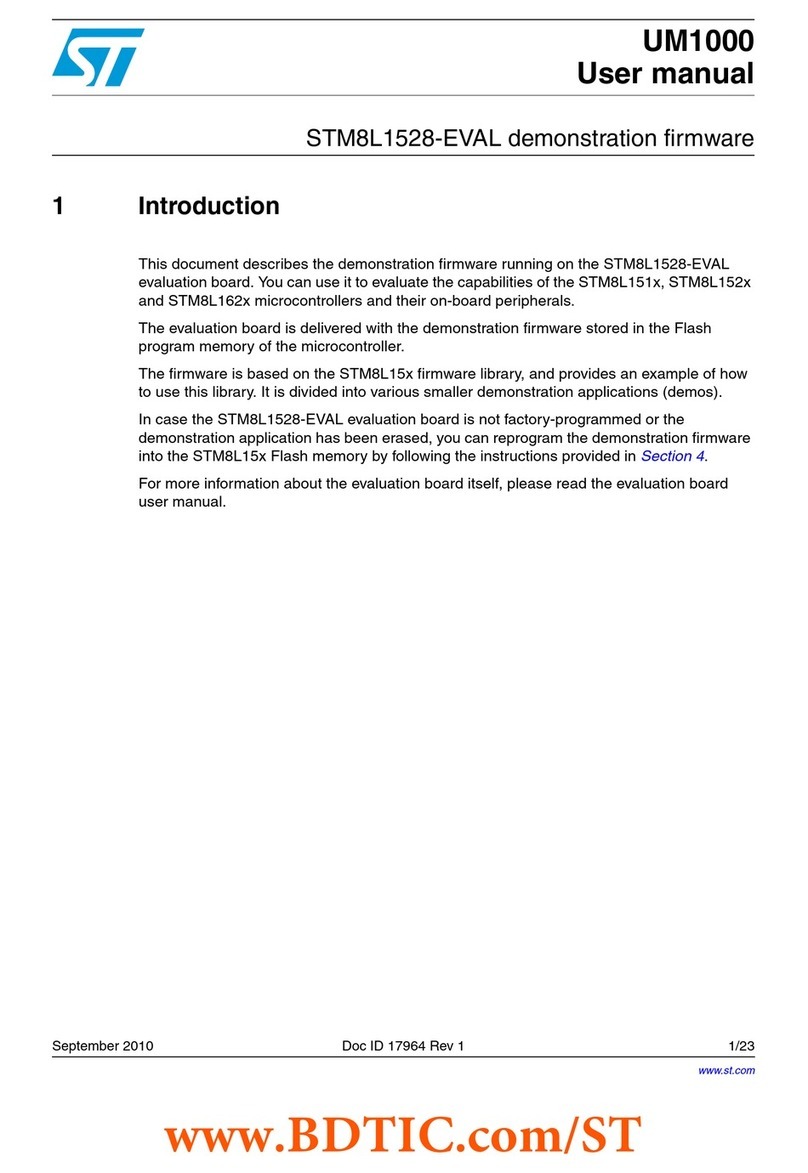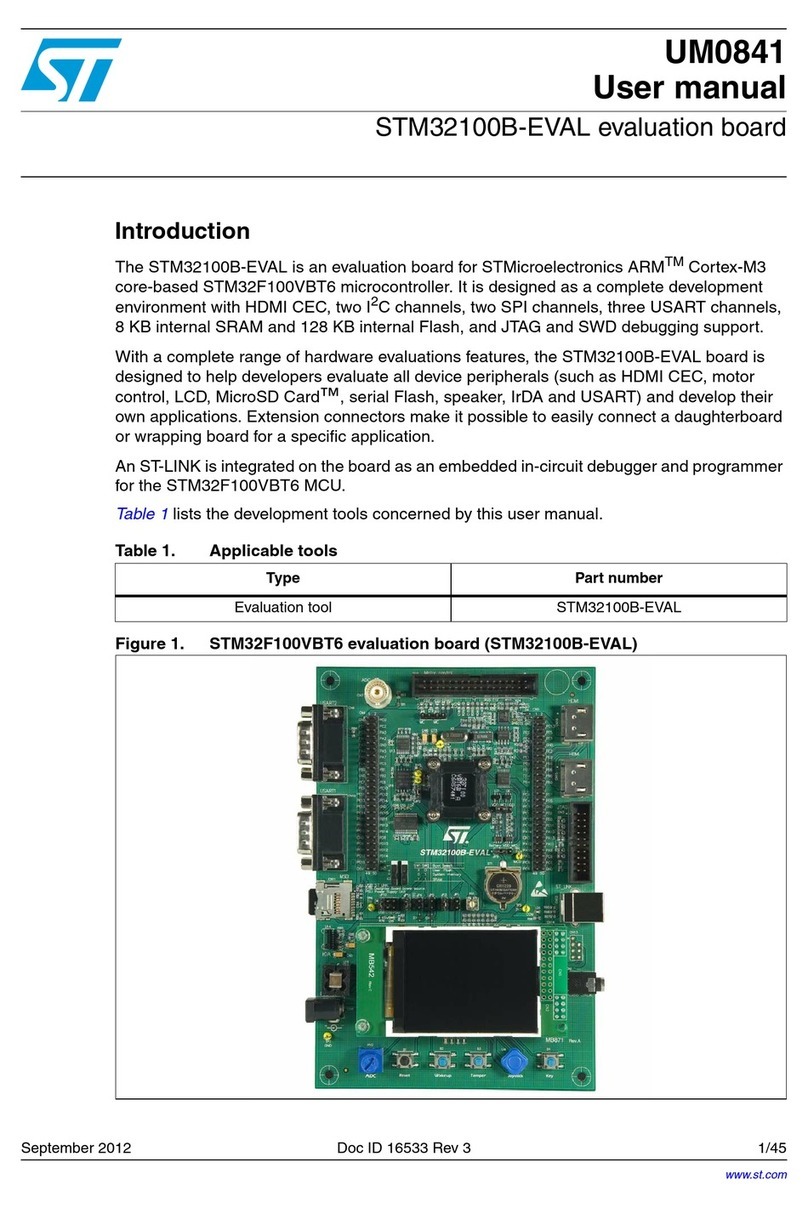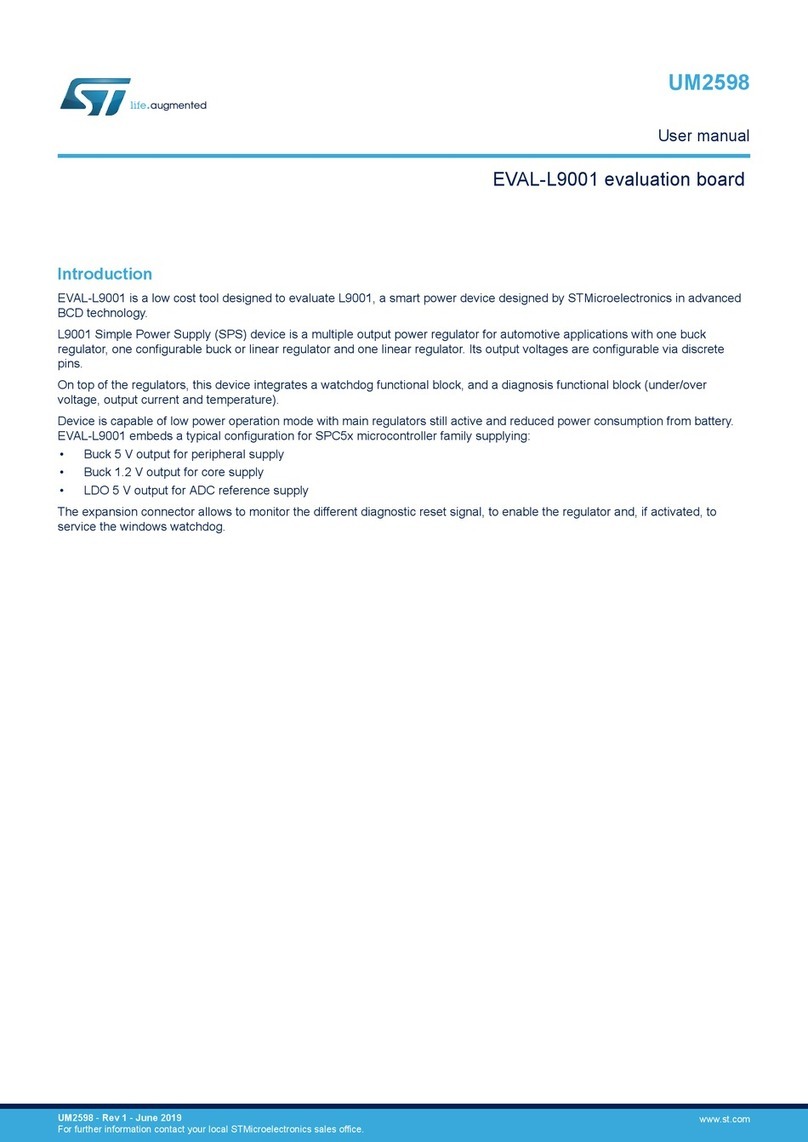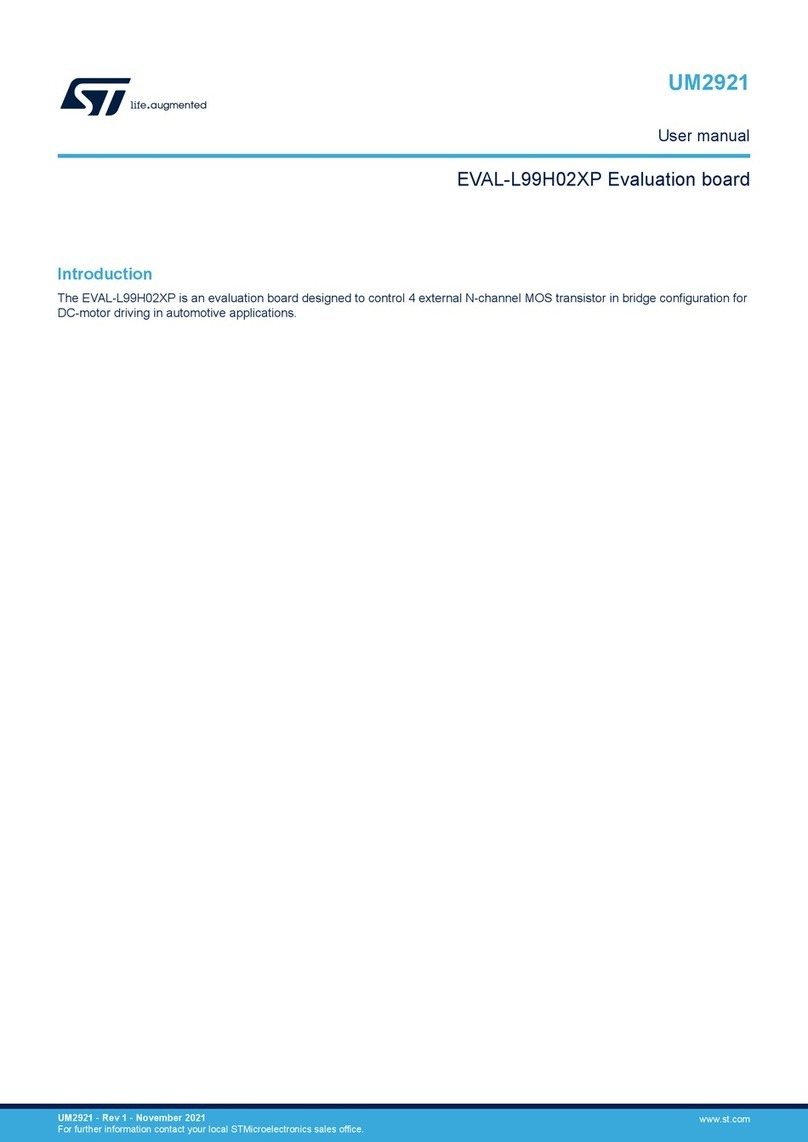List of figures
Figure 1: STEVAL-BLUEMIC-1 evaluation board.......................................................................................1
Figure 2: STEVAL-BLUEMIC-1 evaluation kit............................................................................................5
Figure 3: STEVAL-BLUEMIC-1 evaluation board: top and bottom ............................................................6
Figure 4: Battery .........................................................................................................................................6
Figure 5: Plastic case..................................................................................................................................6
Figure 6: SWD cable...................................................................................................................................6
Figure 7: STEVAL-BLUEMIC-1 evaluation board hardware architecture...................................................7
Figure 8: STEVAL-BLUEMIC-1 evaluation board main components.........................................................7
Figure 9: Power and SPBTLE-1S module..................................................................................................9
Figure 10: MEMS, button and LEDs.........................................................................................................10
Figure 11: STSW-BLUEMIC-1 software architecture ...............................................................................11
Figure 12: STSW-BLUEMIC-1 folder structure.........................................................................................12
Figure 13: STSW-BLUEMIC-1 audio processing chain............................................................................14
Figure 14: ADPCM encode-decode schema............................................................................................15
Figure 15: ADPCM packet mechanism.....................................................................................................16
Figure 16: BLE packets for 16 Hz audio...................................................................................................17
Figure 17: STSW-BLUEMIC-1 software package architecture.................................................................17
Figure 18: Battery connection and power switch......................................................................................21
Figure 19: STEVAL-BLUEMIC-1 evaluation board in plastic case...........................................................22
Figure 20: STM32 Nucleo board and STEVAL-BLUEMIC-1 SWD connections with a 5-pin flat cable ...23
Figure 21: Voice streaming from the STEVAL-BLUEMIC-1 evaluation board to an Android™ or iOS™
mobile device............................................................................................................................................24
Figure 22: BlueMS (Android version) app device list................................................................................24
Figure 23: BlueMS (Android version) BlueVoice demo............................................................................25
Figure 24: BlueMS (Android version) ASR language selection................................................................26
Figure 25: BlueMS (Android version) Chinese ASR, iFlytek technology..................................................27
Figure 26: BlueMS (Android version) popup API key window..................................................................27
Figure 27: BlueMS (Android version) ASR service enabled.....................................................................28
Figure 28: BlueMS (Android version) voice recording..............................................................................29
Figure 29: BlueMS (Android version) recognised voice text.....................................................................30
Figure 30: Google Chromium-dev: search group .....................................................................................31
Figure 31: Google Chromium-dev: join group to post...............................................................................31
Figure 32: Google Chromium-dev: join the group ....................................................................................31
Figure 33: Google Chromium-dev: create project ....................................................................................32
Figure 34: Google Developers Console: new project...............................................................................32
Figure 35: Google Developers Console: ASRProject...............................................................................32
Figure 36: Google Developers Console: select API .................................................................................32
Figure 37: Google API Manager: enable API ...........................................................................................33
Figure 38: Google API Manager: create API key .....................................................................................33
Figure 39: Google API Manager: Android API key...................................................................................33
Figure 40: BlueMS (Android version) plot data page................................................................................34
Figure 41: Voice streaming from a STEVAL-BLUEMIC-1 evaluation board to an STM32 Nucleo board 35
Figure 42: Receiver recognized as USB microphone...............................................................................36
Figure 43: Audacity recording voice streamed by the peripheral .............................................................36
